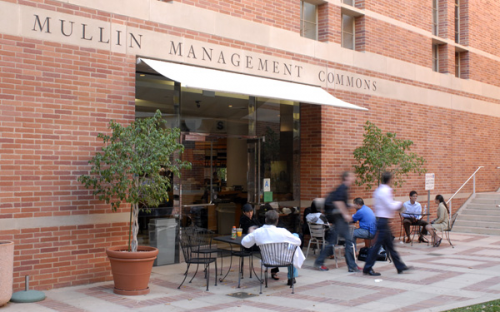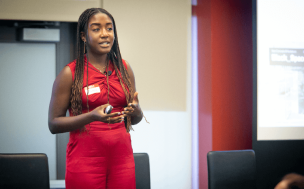MBA programs at a number of top schools, such as Lancaster and Imperial College in the UK and Stanford and Wharton in the US, have hit or are approaching gender parity. Some are securing gains across entire program portfolios.
Schools have focused on international diversity but the issue of attracting more female candidates has risen up the agenda as political and business pressure builds on companies to appoint more female chiefs.
Professor Ginny Gibson, deputy dean of UK-based Henley Business School, says schools can help women in business.
Henley invites female executives to speak at its campuses, including Dido Harding, the CEO of telecoms group TalkTalk, and launched the Henley Women in Leadership Forum last year. It also partnered with the 30% Club, a campaign group to get more women on boards, to offer a fully-funded scholarship to women for its MBA programs.
Its efforts have yielded results: the Henley MBA has consistently between 35% and 45% women enrolled.
In continental Europe, Spain’s ESADE Business School runs a program in Madrid designed to help high-level female managers earn promotions, and is sponsored by the Spanish government and funded mostly by the EU, says Cristina Sassot, MBA and MSc admissions director.
She estimates that approximately 30% of European MBA students are women. But women account for 43% of global test takers of the GMAT, the standard business school entrance exam, accord to figures from GMAC.
The US has made progress. Dawna Levenson, director of MBA Admissions at MIT Sloan School of Management, says women enrolled in MIT’s two-year MBA comprise 40.7% of the student body – a record. MIT has been hosting women-specific recruiting events on campus, and networking events across the US, Dawna says.
MIT is not alone. Harvard Business School announced plans this month to launch a new recruiting program that targets students at women-only colleges.
Elissa Ellis-Sangster, executive director at Forté Foundation, which promotes women’s business careers through education, says that business school environments are now more inclusive. She adds: “Business schools have made so many strides in the last 10 years to market to women.”
In Asia, China Europe International Business School runs special professional events dedicated to women’s issues, and offers women-specific scholarship funding, says Roy Chason, an assistant director.
Like many schools, Shanghai-based CEIBS also has its Women in Leadership Club. Similar clubs exist at business schools including Darden, INSEAD and UCLA Anderson.
Student-led clubs are key to not only recruiting more women but helping them to progress in their careers. “Equipping women with the support and resources they need to advance in their careers is critical,” says Camille Wingo, co-president of the Association of Women in Business at Duke University’s Fuqua School.
Getting more women on boards is a global problem. In the US, just 23 of Fortune 500 firms have a female chief executive. But there are female MBAs at the top – including Mary Barra at carmaker General Motors and Irene Rosenfeld of Mondelēz, the food group.
George Washington University Business School has taken a lead in this area by creating “On the Board” – an executive course that seeks to build a pipeline of women to serve on boards, which ended last year.
The goal of the program was to be recognized as a major international initiative for advancing women’s executive leadership, says Chris Storer, executive director of graduate programs at George Washington.
Such courses have made progress but Ginny at Henley warns that business schools should not be complacent.
She says that there already is close to gender parity at undergraduate and master levels; the challenge is to increase gender diversity on EMBA programs.
Another striking problem is the low percentage of female faculty at the world’s top schools – only two of the top 100 MBA programs ranked by the FT have more than 40% women faculty members.
Upping female enrolment is important but business schools are quick to point out that they must treat applicants equally.
When asked how important it is schools to close the gender gap, Dr Julie Hodges, director of MBA programs at Durham University Business School, says: “It is about getting the best students on our program – whether they are male or female.”
RECAPTHA :
08
45
39
19







